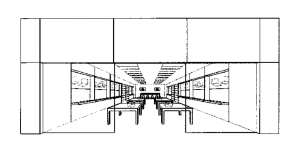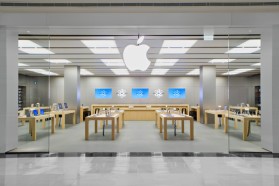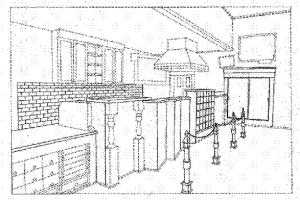I’ve been meaning to write for quite some time now, but my talents in procrastination have accumulated into quite the beast, a beast to be dealt a small blow today.


A recent Preliminary Ruling judgment handed down by the European Court of Justice (CJ), Case C-421/13, enticed me to battle the procrastination beast. The case involves a refusal by the German trademark office (DPMA) to grant trademark protection to Apple for the design of its Apple Store layout, depicted here. Apple appealed the refusal to the German Federal Patent Court, which then referred to case to the Court of Justice for a decision in the form of a Preliminary Ruling. In a Preliminary Ruling case, the CJ typically resolves legal questions about EU law which have an effect on EU Member State laws.
At issue were Articles 2 and 3 of the Community Trade Mark Directive, the primary EU legislation on trademarks. The former states that a sign must be “capable of being represented graphically” and that “the shape of goods or their packaging” is protectable as a trademark, so long as the sign can distinguish the services of one company from those of another. Article 3 bars from registration marks which are non-distinctive, descriptive, and customary in the language or practices of a trade, as well as shapes necessary to obtain a technical result, shapes which result from the nature of the goods themselves, and shapes which give substantial value to the goods. The DPMA refused trademark protection for the design for the Apple Store, reasoning that consumers would not perceive the layout of a store as an indication of origin, despite the fact that it may indicate the quality or price bracket of the products. Additionally, the DPMA considered that the design of the Apple Store was not sufficiently distinguishable from other electronics stores.
The CJ first reviewed established case law, stating that the subject matter of a trademark application must satisfy three conditions: it must be a sign, the sign must be capable of graphic representation, and it must be capable of distinguishing goods or services from one trader to another. The CJ then held that when a store layout departs significantly from the norms or customs of the concerned industry, it cannot be ruled out that that layout would allow the applied for goods/services to be identified as originating from a particular trader. The CJ also pointed out that although a store layout is capable of being a sign and may be graphically represented without a need for specifying size or proportions, an analysis must still be made regarding the distinctiveness of the layout, considering the goods/services and the relevant public.
On the issue of registrability for services, the CJ was more cryptic. The judgment explained that Apple contended that a mark for services intending to induce the sale of goods should be registrable, while the EU Commission argued that situations, in which the sole objective of the services is to induce customer purchases, should not lend to registration of a mark for those services. In the next sentence, the CJ curiously and immediately held that the layout of a store selling goods may also be registered for services where those services “do not form an integral part of the offer for sale of those goods”. Where is the analysis?
Ultimately, this judgment opens the EU door to registration of store layouts, which the USPTO has allowed for quite some time. It will be interesting to see how the distinctiveness and descriptiveness analyses will develop in the upcoming years. Would the EU find the following layouts registrable? The USPTO has.

